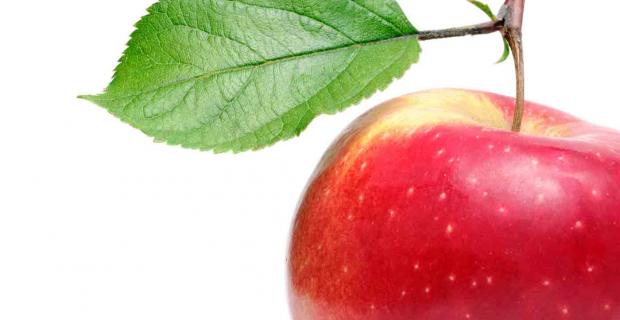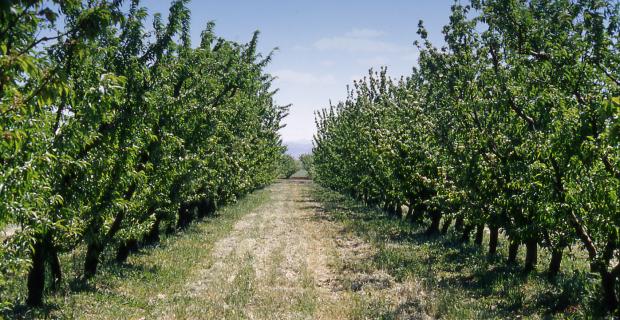Sustaining the Pleasure of Good Eating

For most of us the pleasure of good eating probably consists of chowing down on fresh vegetables with taste bud-exploding flavors, a tree-ripened, savory peach that melts in your mouth, or a gusty steak or delicious pork chop.
But, in truth, the pleasure of good eating consists of much more than tasty treats.
When I was growing up in North Dakota almost everything we ate was produced on our farm. We had a large garden where we grew all of the vegetables and condiments and most of the fruit that we ate in season and canned for the winter months. Wild plums and chokecherries provided additional fruits from which we made jam and wine. All of our meat (beef, pork, lamb, chicken, turkey, goose, and duck) was produced on the farm, and we milked cows for our own milk and cream, and made all of our own butter and cheese. Once a year we would go into town to buy 400 to 500 pounds of flour from which we baked all of our own bread.
There was only one eating rule at our table — we were expected to never be schnagich. Schnagich is a Russian-German word for which there is probably no exact English translation. Even if you didn’t understand its exact meaning, just the sound of the word was so harsh you knew it was something you never wanted to be. To be schnagich was to be finicky. But it was much more than that; it was about being disrespectful. At our table we were expected to show appreciation for the food, for the labor of those who produced and prepared it, for the animals and plants that gave their lives for it, and for the land that was the gift that made it all possible.
Of course there was a lesson in all this — that the pleasure of good eating is about much more than the taste of the food. It is about a deep appreciation for, and connection with, everything on our plates.
Back then, I suspect, most Americans knew this, because we were intimately connected with the food we ate. As our food system has become industrialized, all of that seems to have changed. Now, for many, food is a commodity like any other. Somewhere along the way Americans came to expect only that our food would be fast, convenient, and cheap. "Factory food" no longer seems like a strange concept.
Factory food has taken us down some bizarre paths. Fruit farmers are now routinely told that the only things that matter are color and shelf life. Some food scientists are suggesting that we may one day manufacture food "pills" that will contain all of the nutrients we need, eliminating the need to produce plants or animals for food at all.
While no one has tried systematically to operationalize such futuristic scenarios, we have industrialized our food system in ways that are almost as bizarre. Nowhere is this more evident than in school lunches, where we have turned kids into food "consumers" who are expected to be passive recipients of whatever we decide to feed them — even when much of the food provided has minimal nutrient value, and no kind of food story that they might understand or support.
Today, some major food industry players are beginning to recognize that the pleasure of good eating does matter. The CEO of one of the country's largest food distributors nicely summarizes it. The pleasure of good eating, he says, is not about fast, convenient, and cheap, but about memory, romance, and trust. To be successful in today’s food market, he says, requires offering products so good that customers will say, "Wow, where did that come from? I want that again" (memory). We also need, he says, to provide customers with a genuine food story so they can feel good about eating that good-tasting product. Increasingly, customers want to know who produced the food; what kind of environmental stewardship was practiced in growing, processing and transporting it; how the animals were treated; and so on (romance). And customers want to be active participants in the food chain — to be able to access information and have a relationship that reaches all the way back to the farmer (trust).
Is this for real? Yes. Dan Barber, one of the nation’s leading chefs, told me that he now spends more time acquainting his servers with the food story behind every item on the menu than he does preparing the food in his two restaurants. Why? Because it is the food story that keeps his customers coming back.
Does this mean that to enjoy the pleasure of good eating requires returning to the food system I grew up with, when we were closely connected to all of the production and processing of everything we ate? Of course not. But it does mean retrieving those values and making them part of our modern food system. And it means being present to each other — physically present for the intimate things we do to fulfill our lives. Next to making love, eating is one of the most intimate things we do.
So I would add two more requirements to memory, romance, and trust: intimacy and affordability. Simply having information on the package or on a website telling us where our food comes from (important as that is) won’t substitute for "being there." This means that in the long run our food and agriculture systems will have to become more decentralized. We may be driven to decentralization in any case, in the interest of energy conservation and food security — but it will also be essential to preserving the pleasure of good eating.
We also need to bring the next generation of Americans into this intimate, reciprocal relationship with eating and the production of food, as part of their early education in our public schools. Through school gardens and kitchen classrooms; field trips to local farms; and the availability of seasonal, local, and sustainably grown food in the school meal program; children can begin to associate these experiences with the pleasure of good eating.
All of this means, I think, that if we are to sustain the pleasure of good eating, our food systems must include a new kind of value chain that connects farm to table by:
- Nurturing a land ethic that respects the gift of good land, including soil, water, plants, and animals;
- Creating opportunities for intimacy, among not only eaters, but among all participants in the food chain;
- Honoring the labor of all involved throughout the global village, and compensating everyone fairly for their parts in putting food on our tables;
- Producing, processing, and distributing food that comes with life-giving stories that everyone can esteem;
- And, yes, providing wonderful, delightful, healthful, nutritious food whose flavors explode in our mouths.
I suspect this is the modern version of not being schnagich at our food tables today.




